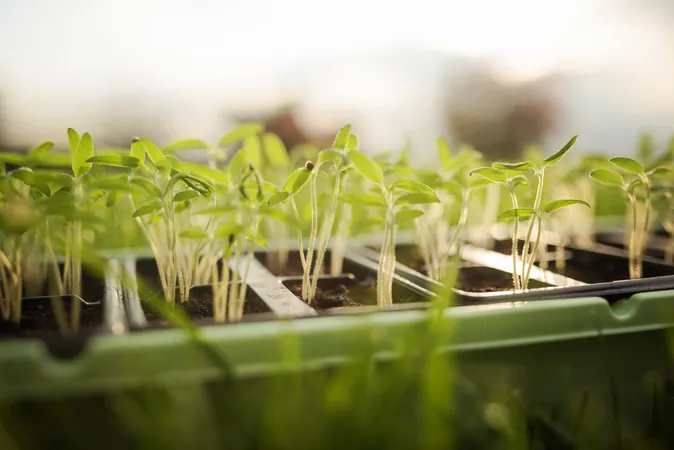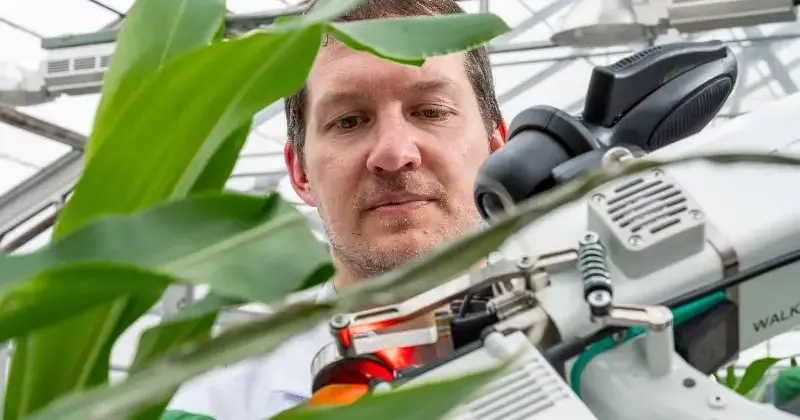
Revolutionary Study Reveals How Tiny Particles Undermine Plant Growth
2025-06-18
Author: Daniel
The Hidden Dangers of Nanoparticles in Plants
A groundbreaking study led by UC Riverside uncovers a hidden threat posed by tiny particles, both naturally occurring and man-made, that infiltrate plant cells and significantly impair their ability to produce food using sunlight. This startling discovery opens new avenues for addressing the issue.
Where Do These Particles Come From?
Everyday human activities like engine combustion and manufacturing, along with natural phenomena such as volcanic eruptions and wildfires, release nanoparticles into the environment. These particles are colossal in number, measuring thousands of times smaller than a human hair.
The Promise of Engineered Nanoparticles
On the flip side, engineered nanoparticles are being hailed for their potential in agriculture and biofuels. They could revolutionize farming by delivering nutrients or pesticides with pinpoint accuracy, shielding crops from extreme weather, and even acting as tiny sensors to monitor crop health.
Juan Pablo Giraldo, an associate professor of plant biology at UCR, points out the glaring inefficiencies in agricultural practices: "Half of all fertilizer ends up polluting our groundwater, and only 5% of conventional pesticides actually hit their targets. Clearly, there's room for improvement."
Even as scientists advocate for the use of nanoparticles to meet the increasing global food demand, they now face a critical dilemma.
Nanoparticles Disrupt Photosynthesis
Research published in Nature Nanotechnology reveals that these seemingly innocuous particles undergo transformations within plant cells that inhibit photosynthesis—the very process that enables plants to convert sunlight into essential energy.
Lin He, deputy division director at the U.S. National Science Foundation, states, "While nanoparticles are everywhere in Earth's ecosystems, we're just beginning to unravel how they interact with the environment."
The Science Behind the Transformation
Under the leadership of Giraldo and PhD student Christopher Castillo, the research team discovered that as nanoparticles penetrate plant cells, they experience changes in pH and acquire lipid layers from plant membranes. This transformation enhances their adhesion to RuBisCO, a critical protein in photosynthesis.
The Critical Role of RuBisCO
RuBisCO is essential for converting carbon dioxide into sugars, fueling plant growth and forming the foundation of the food chain. Unfortunately, the lipid-coated nanoparticles hinder RuBisCO's functionality, diminishing its efficiency threefold.
A Multi-Year Investigation with Promising Collaborations
To investigate these transformations, the research team—collaborating with institutions like Santa Clara University and Johns Hopkins—analyzed how much carbon dioxide Arabidopsis leaves absorb, an indicator of RuBisCO activity. Remarkably, the nanoparticles had negligible effects in test tubes, but their transformation within living plants was significantly detrimental.
"This is the first time we've been able to compare the effects of nanoparticles in a living cell context versus a controlled environment," Giraldo explained.
Understanding the Mechanism of Action
The study also dispelled earlier concerns about the nanoparticles' positive charge interfering with protein functionality. Instead, the real issue lies in the transformations these particles undergo once inside the plants.
Co-author Rigoberto Hernandez emphasized the value of their diverse expertise in tackling complex plant biology: "We provided insights into how nanoparticles interact with proteins on a microscopic level through computer simulations."
The Future of Nanoparticles in Agriculture
Researchers are calling for deeper exploration into how nanoparticles chemically change within living organisms. Despite the challenges, nanoparticles remain an attractive option for enhancing agricultural efficiency and sustainability. With advances, they can potentially be tailored to be harmless and effective for plant growth.
Catherine Murphy, another study co-author, concluded, "While we're just scratching the surface of understanding nanoparticles’ impacts, we now have a clearer path forward to optimize their use in agriculture and biotechnology."




 Brasil (PT)
Brasil (PT)
 Canada (EN)
Canada (EN)
 Chile (ES)
Chile (ES)
 Česko (CS)
Česko (CS)
 대한민국 (KO)
대한민국 (KO)
 España (ES)
España (ES)
 France (FR)
France (FR)
 Hong Kong (EN)
Hong Kong (EN)
 Italia (IT)
Italia (IT)
 日本 (JA)
日本 (JA)
 Magyarország (HU)
Magyarország (HU)
 Norge (NO)
Norge (NO)
 Polska (PL)
Polska (PL)
 Schweiz (DE)
Schweiz (DE)
 Singapore (EN)
Singapore (EN)
 Sverige (SV)
Sverige (SV)
 Suomi (FI)
Suomi (FI)
 Türkiye (TR)
Türkiye (TR)
 الإمارات العربية المتحدة (AR)
الإمارات العربية المتحدة (AR)